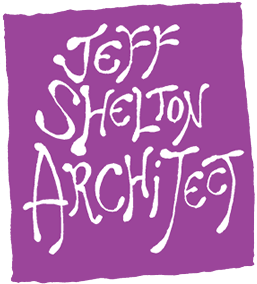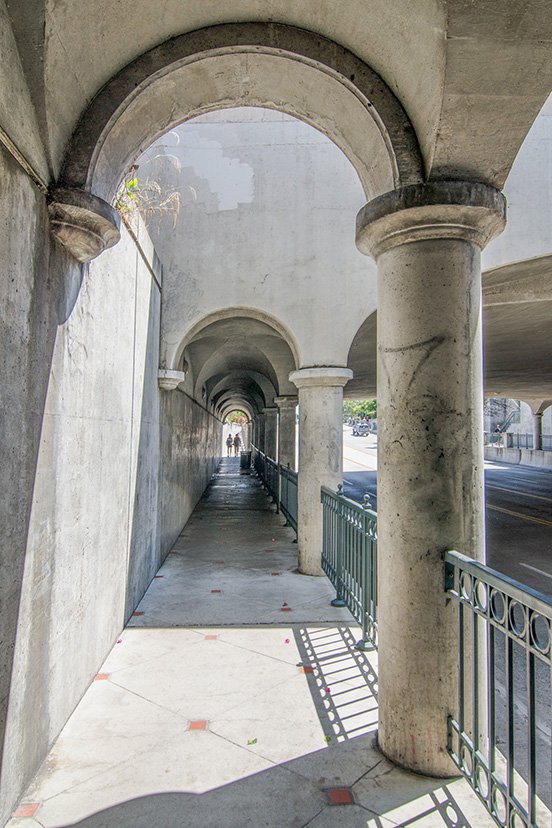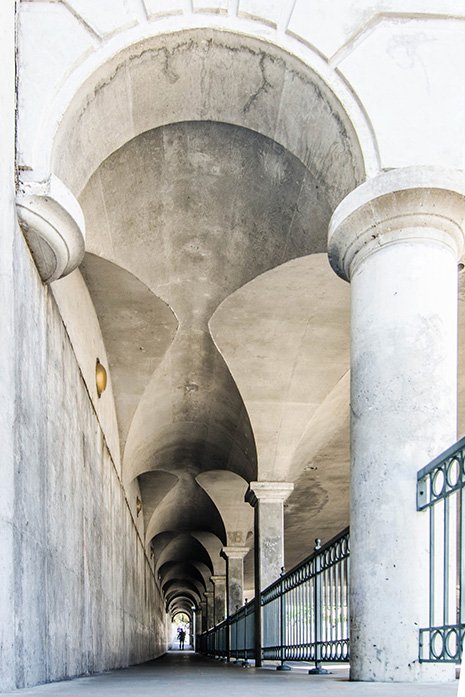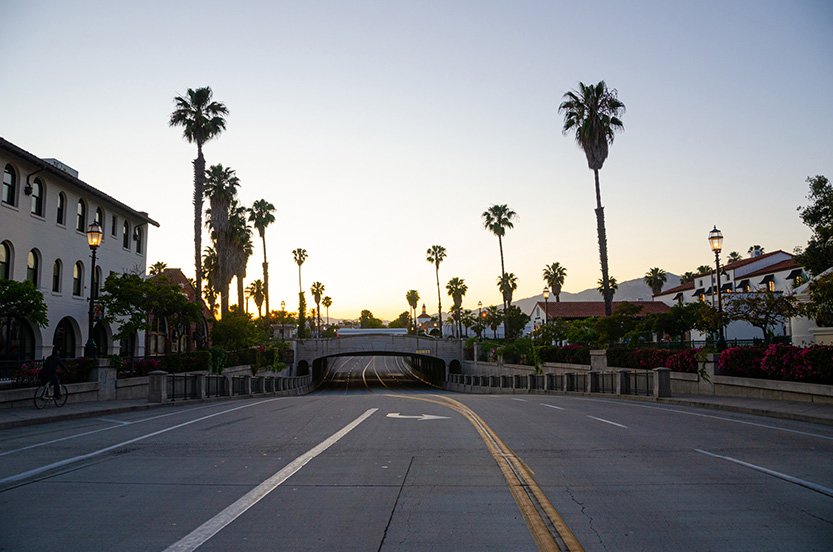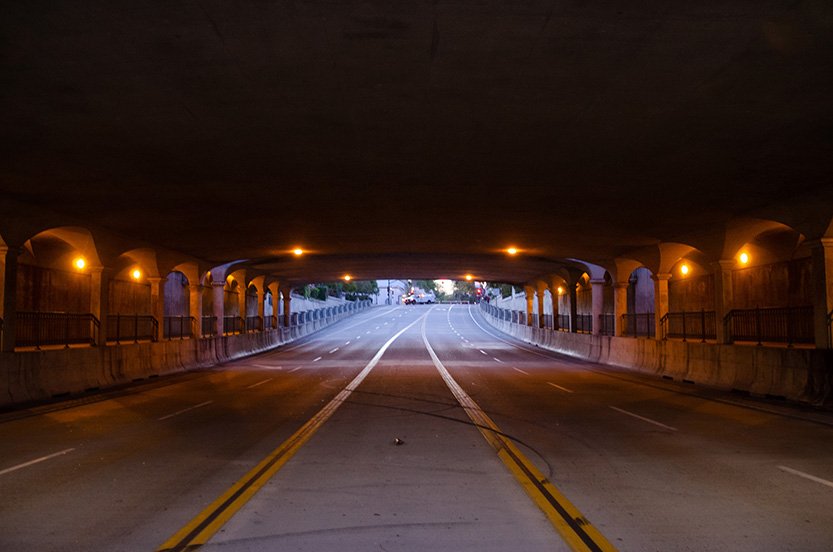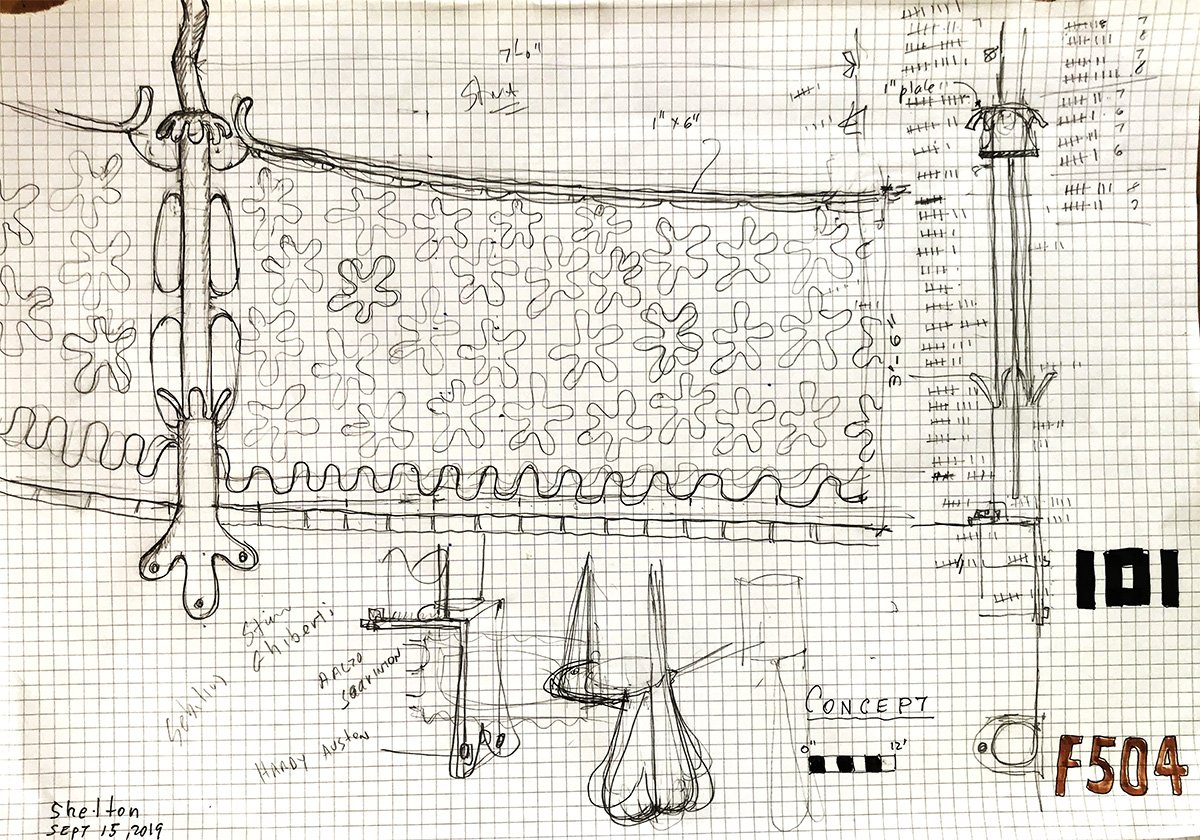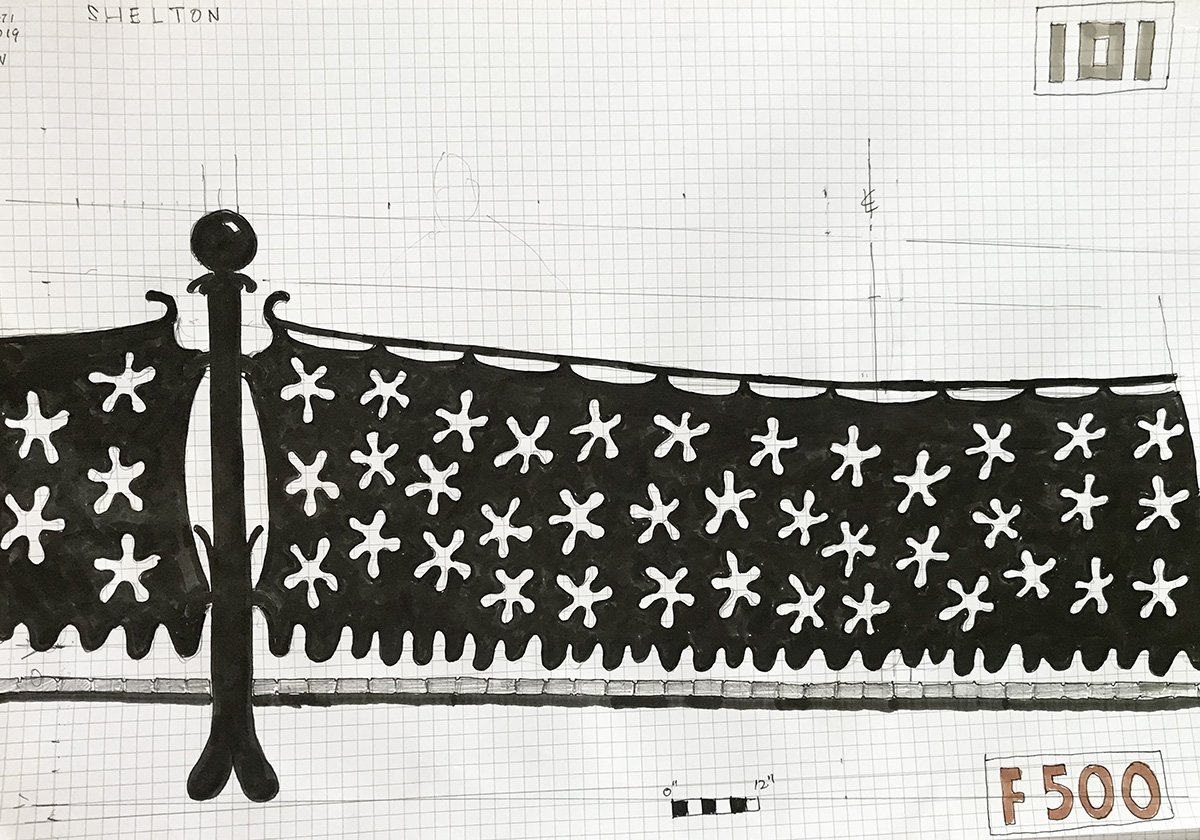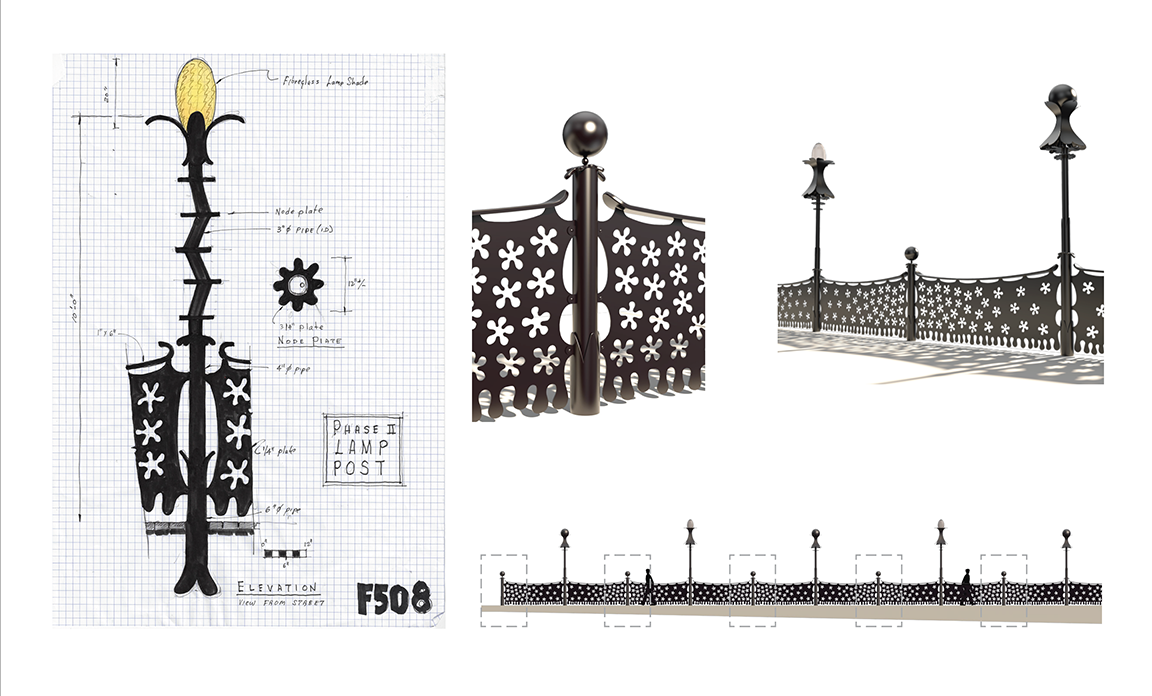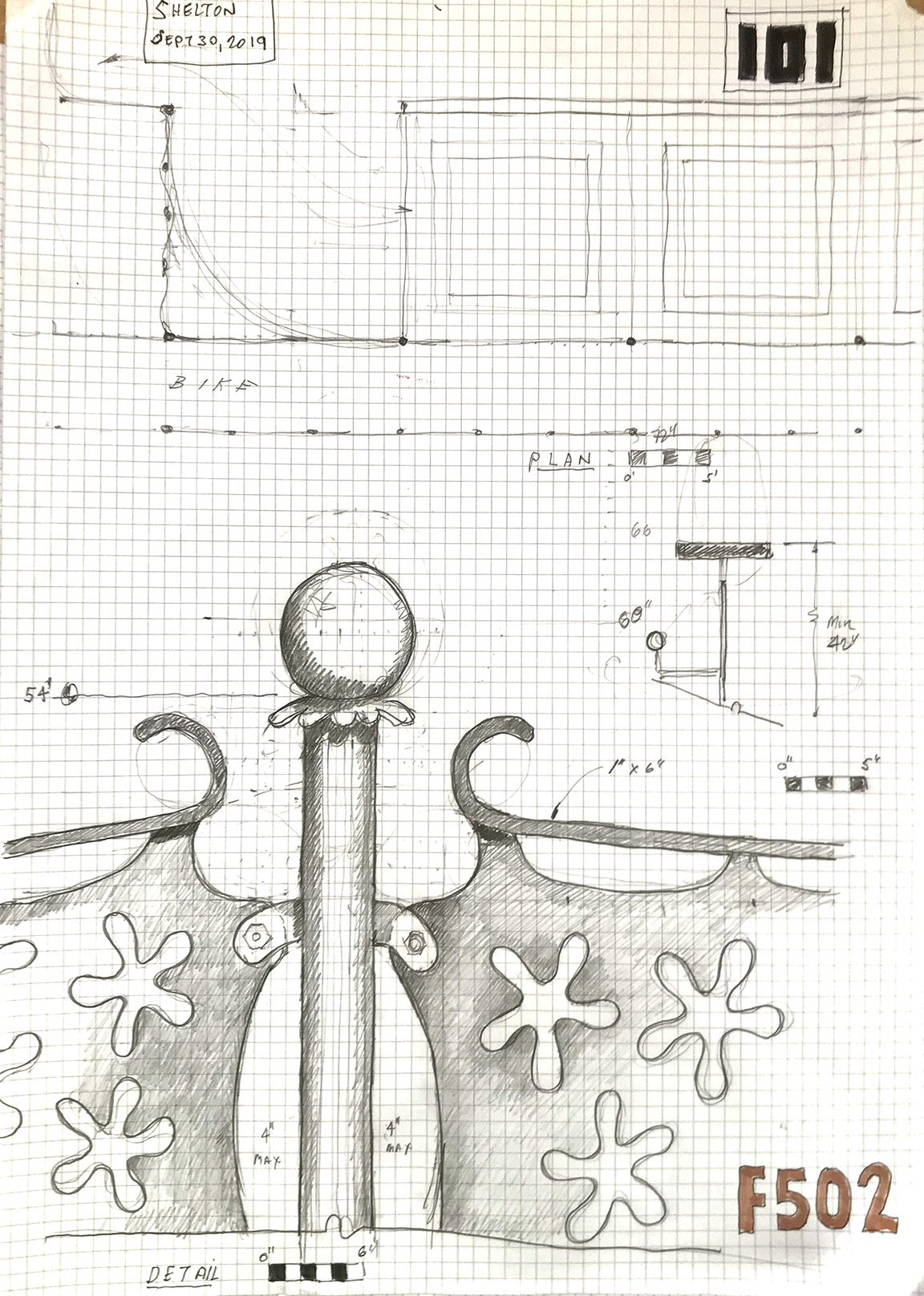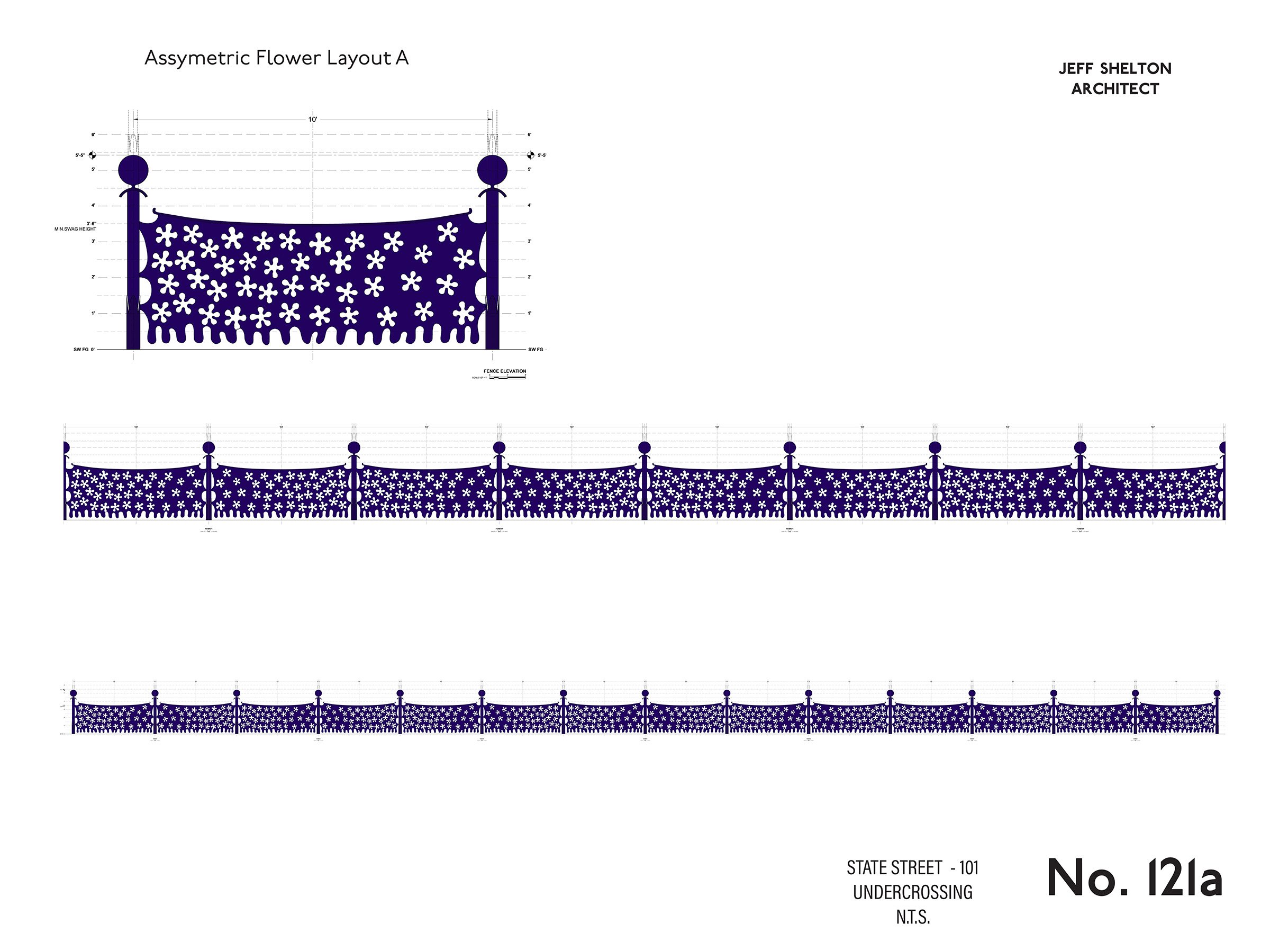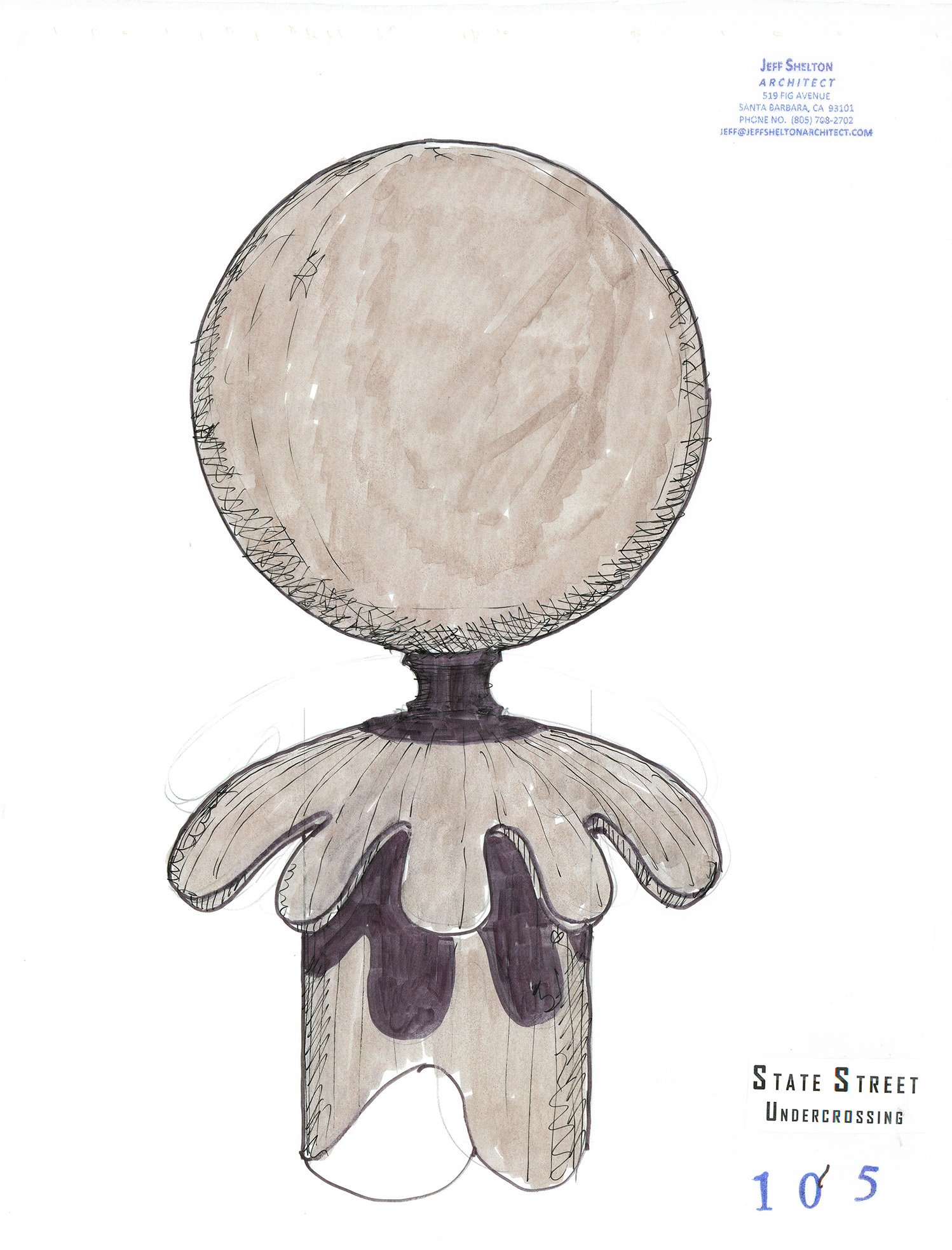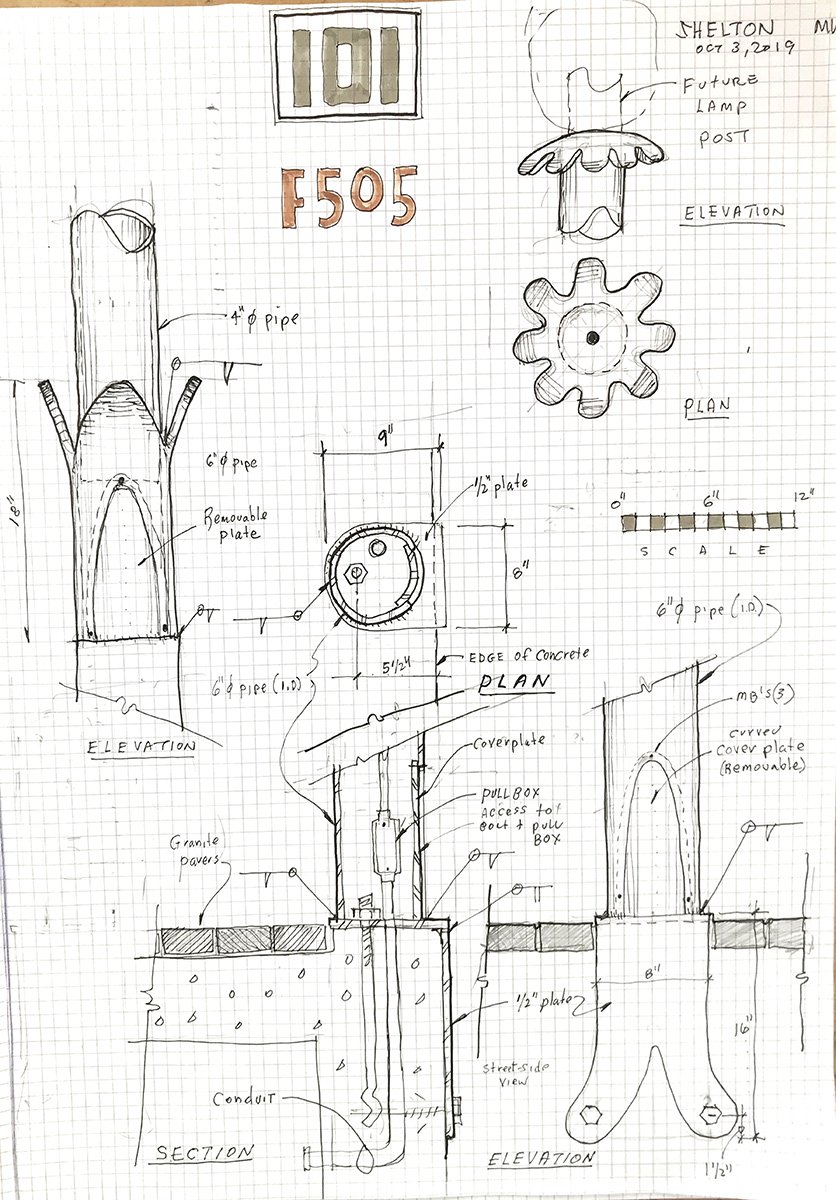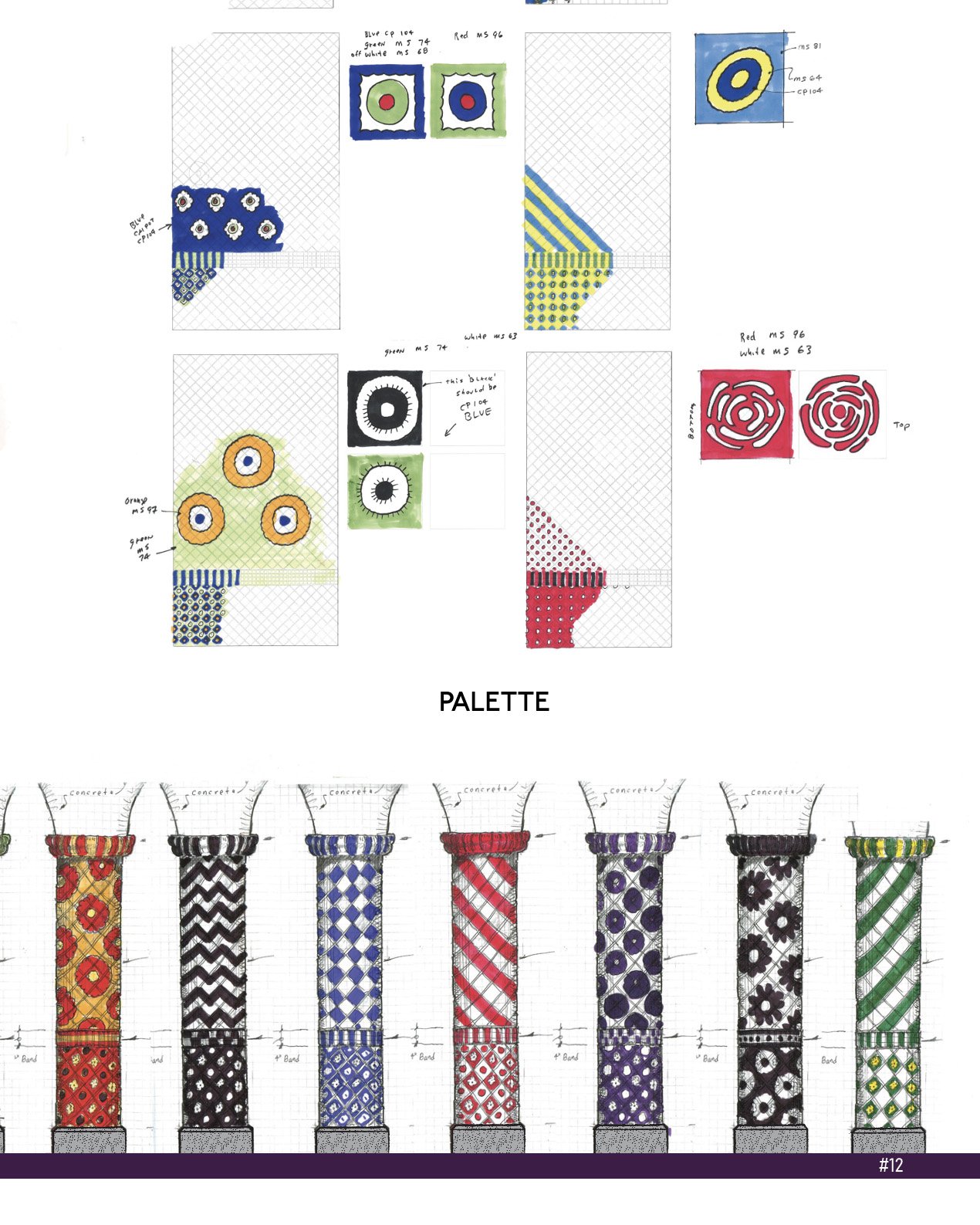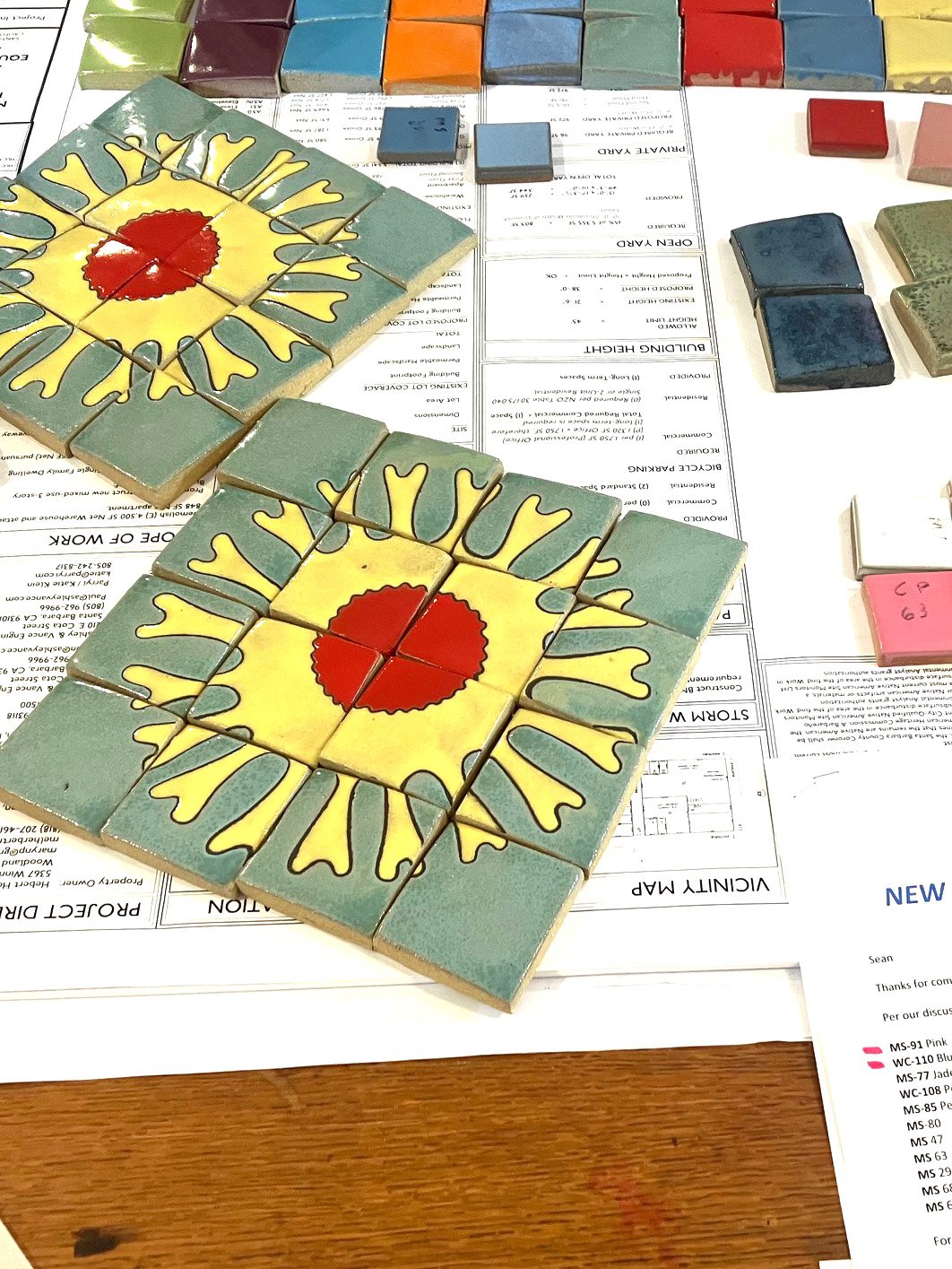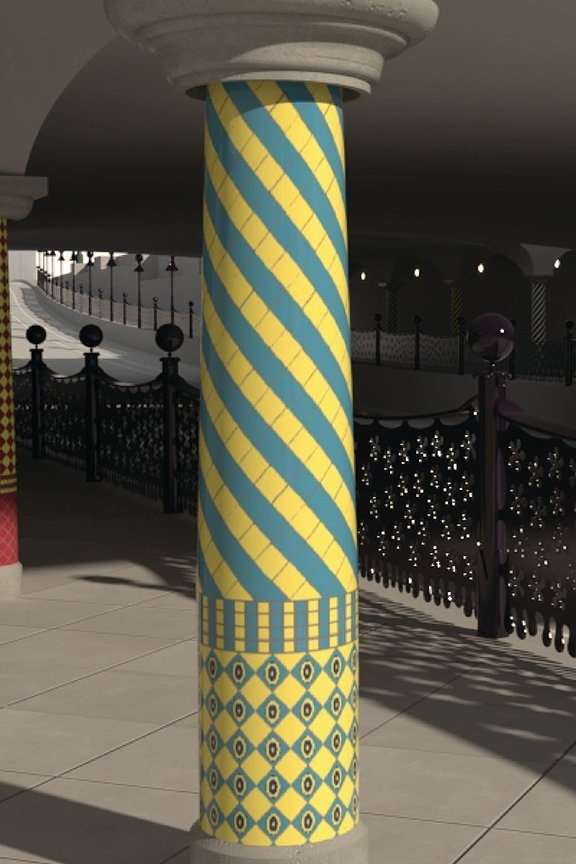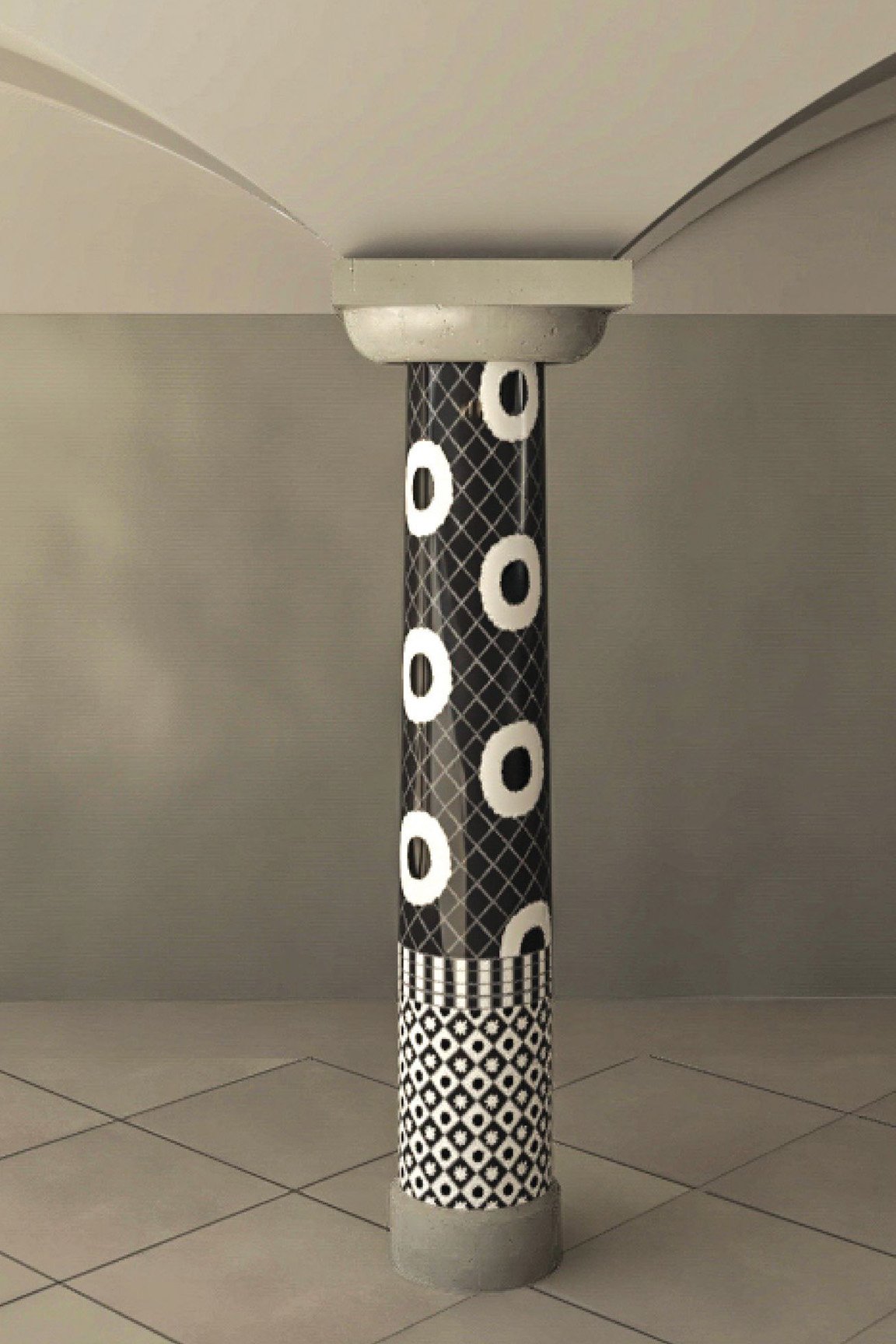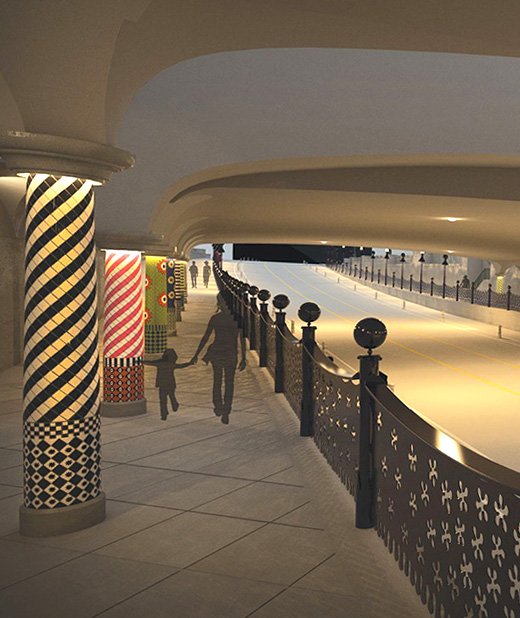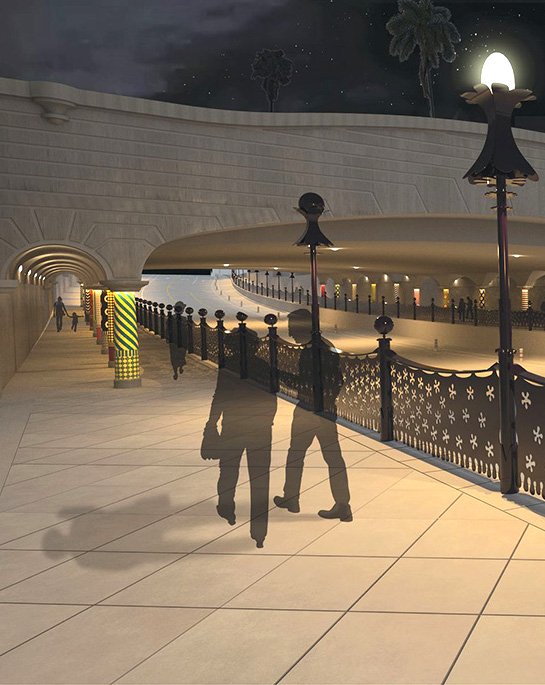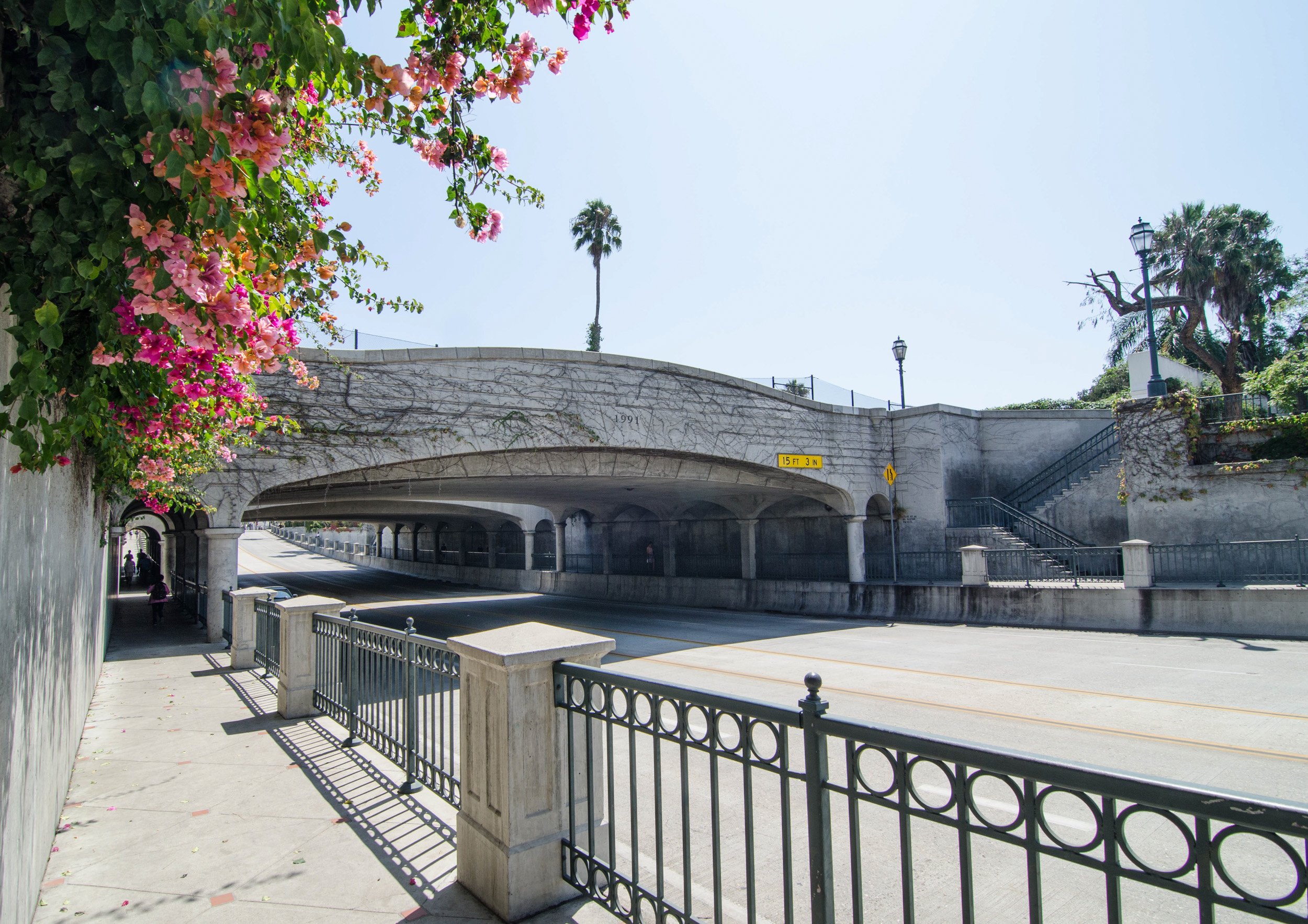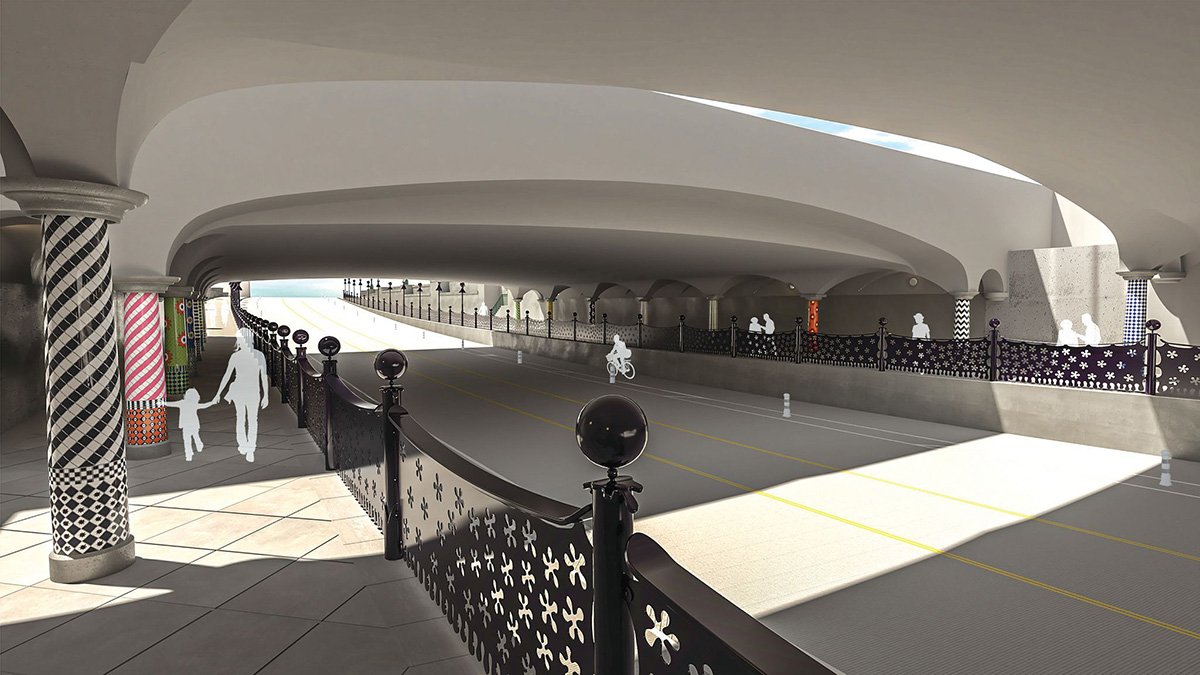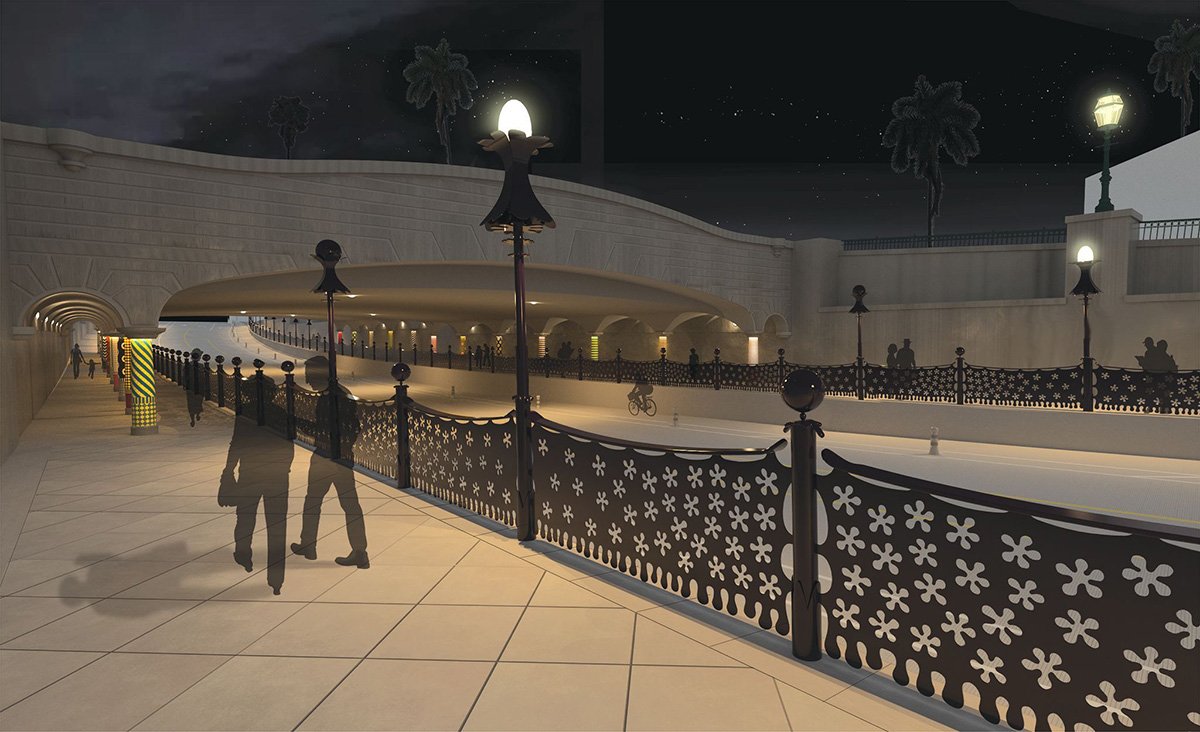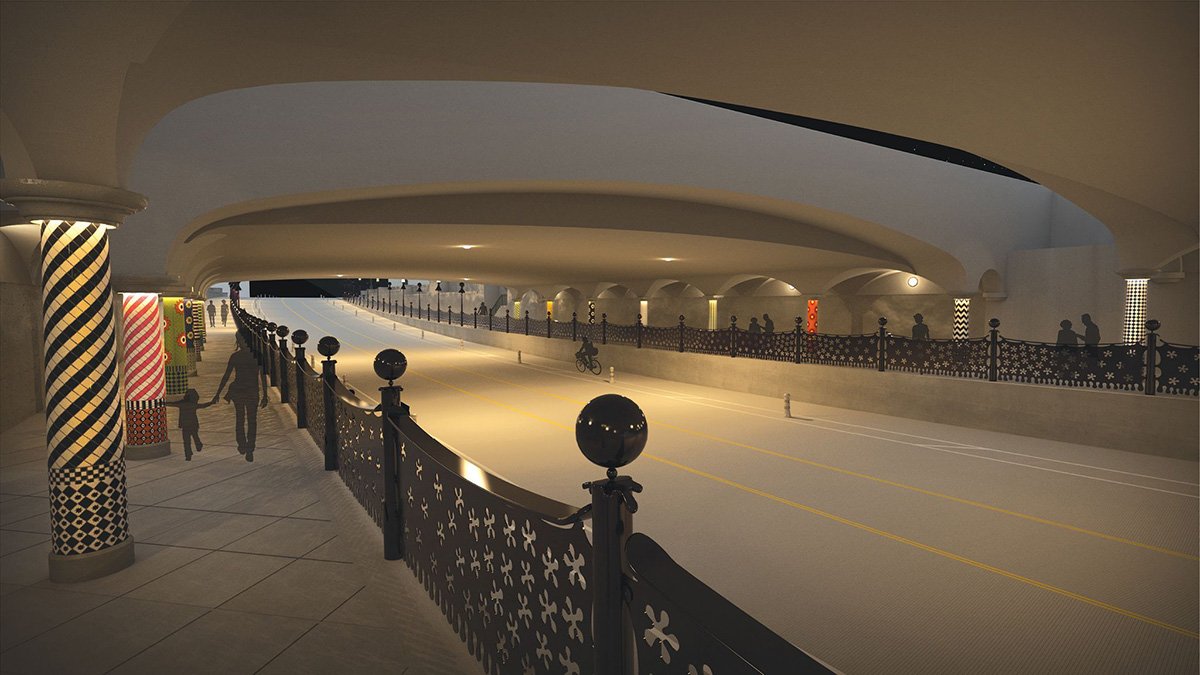State Street Undercrossing
In 2019, we were contacted by Bengal Engineering asking if we'd like to join their team as architectural consultant for a new Santa Barbara Public Works project. Bengal was putting together a proposal for the State Street Undercrossing, a corridor which passes under the 101 Freeway and connects Santa Barbara's waterfront to downtown Santa Barbara. This ‘undercrossing’ or ‘underpass’ is sort of a gateway to and from the beach to the city but the walking experience has always been a little grim, and having to walk under a noisy four lane freeway is not natural. The existing bridge portion of the undercrossing is actually quite remarkable, espectially for a Cal Trans project, and this extraordinary bridge design set the stage for our pedestrian improvements below.
[Drawings by Jeff Shelton. Digital Renderings by Harrison Smith of Bengal Engineering.]
We met for coffee, and Bengal kindly added our name to their proposal to the City. Three months later, they called with the news that the team had been awarded the design contract.
Clearly, the existing underpass was not designed for the number of pedestrians that now travel between the beach and the center of town. Santa Barbara's nearby Funk Zone has been going full speed for awhile now and the city, like it or not, is a tourist destination. But whether you are a local or a tourist, it is not fun or desirable to have to descend into the underbelly of the freeway on narrow pedestrian paths to get to the other side. Many people don’t attempt to make that journey after the sun goes down.
There were a number of goals for the project, and Bengal Engineering and Public Works wisely decided to double the width of the pedestrian paths as well as provide six-foot-wide bike paths including a three-foot-wide safety strip in each direction. Lighting would also be enhanced for safety. Limiting automobile traffic to one lane each way, similar to State Street, made this possible and gave the city and the design team a lot more room to work with.
Still, wide sidewalks and better lighting were not enough to encourage pedestrians to make the journey through the passage. We needed to make the experience more enjoyable and intentional. We noticed newcomers stopping before the descent, pausing and wondering if this was really the only way to get to the ocean, or to find their way to the center of town. We decided to treat this experience like walking over a bridge in a great city, or maybe it's more like walking on the reflection of a bridge on a river below.
The rhythm of the guardrail needed to have variation, unlike the existing guardrail which has an “A-A-A-A” rhythm. We created an “A-B-A-C-A-B-A” rhythm, to help shorten the perception of the journey. First there is a short post with a ten inch ball, and then a taller post with a larger sixteen inch ball and then the tallest post is an open flower with a glowing egg-shaped cluster of Matilija Poppy stamen. These egg-shaped lamps provide some light, but mostly act as a repeating beacon that give the pedestrian confidence that this voyage under a noisy freeway has a purpose and a meaningful destination.
The steel guardrail is purposefully muscular for security from automobiles driving by but the steel is softened with curves and a guardrail that mimics a hanging cloth. The seemingly random placement of the Toyon flowers cut out of the hanging steel fabric helps distract the pedestrian from the fact that the entirety of the walkway is sloping. A rigid orthogonal placement of a design on a sloping panel would be disturbing and problematic, and call attention to the sloping surface of the walkway.
Because of Cal Trans regulations, we were not allowed to touch the bridge or the sidewalls with anything, not even paint, so we focused on the walkway. Once the walkway project is complete, the City and the Arts community can address the Cal Trans portion of the project.
Since the existing columns don’t touch the bridge above, we were able to play with these architectural features. They correspond to the intersecting vaults of the remarkable Cal Trans bridge and we decided to have fun with them, as they're located in the darkest and loudest part of the journey, and a reward and maybe a distraction would be welcome at this point. Each column will be tiled differently, and in a different color palette, with tiles handmade by the craftspeople at California Pottery and Tile Works.
Bengal Engineering perhaps ventured out of their comfort zone to put this city passageway together. The Public Works Department also veered towards an exciting addition to the center of the city, and their proposal was supported by the Historic Landmarks Committee and the City Council. Projects like these take contributions from the entire community.
Digital Renderings by Harrison Smith of Bengal Engineering.
